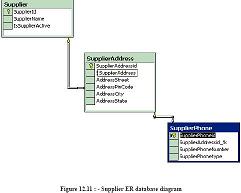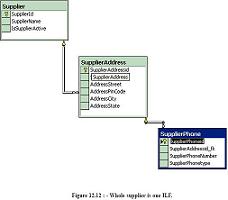What are the different elements in Functions points
What are the different elements in Functions points?
✍: Guest
The different elements in function points are as follows:
Internal Logical Files (ILF)
External Interface File (EIF)
Record Element Type (RET)
DET (Data element types)
File Type Reference (FTR)
External Input (EI)
External Inquiry (EQ)
External Output (EO)
Letfs run in detail through each of them.
Internal Logical Files (ILF)
Following are points to be noted for ILF:
ILF are logically related data from user point of view.
They reside in Internal Application boundary and are maintained through elementary
process of application.
ILF may have maintenance screen or probably not.

External Interface file (EIF)
They are logically related data from user point of view.
EIF reside in external application boundary.
EIF is used only for reference purpose and are not maintained by internal application.
EIF is maintained by external application.
Record Element Type (RET)
Following are points to be noted for RET
RET are sub-group element data of ILF or EIF.
If there is no sub-group of ILF then count the ILF itself as one RET.
A group of RET within ILF are logically related, most probably with a parent
Child relationship. Example: - Supplier had multiple addresses and every address
can have multiple phone numbers (see the image below which shows database
diagrams). So Supplier, SupplierAddress and Supplier phone numbers are RET.

RET quantifies the relationship complexity of ILF and EIF.
DET (Data element types)
Following are the points to be noted for DET counting:
Each DET should be User recognizable. Example in the above given figure we have
kept auto increment field (Supplierid) for primary key. Supplierid field from user
point of view never exists at all, itfs only from software designing aspect, so does
not qualifies for DET.
DET should be non-recursive field in ILF. DET should not repeat in the same ILF
again, it should be counted only once.
Count foreign keys as one DET. gSupplieridh does not qualifies as DET but its
relationship in gsupplieraddressh table is counted as DET. So gSupplierid_fkh in
supplieraddress table is counted as DET. Same holds true for gSupplieraddressid_fkh.
File Type Reference (FTR)
Following are points to be noted for FTR:
FTR is files or data referenced by a transaction.
FTR should be ILF or EIF. So count each ILF or EIF read during process.
If the EP is maintaining an ILF then count that as FTR. So by default you will
always have one FTR in any EP.
External Input (EI)
Following are points to be noted for EI:
Itfs a dynamic elementary process [For definition see gDynamic and Static Elementary
Processh] in which data is received from external application boundary. Example: -
User Interaction Screens, when data comes from User Interface to Internal
Application.
EI may maintain ILF of the application, but it is not compulsory rule. Example: - A
calculator application does not maintain any data, but still the screen of calculator
will be counted as EI.
Most of time User Screens will be EI, again no hard and fast rule. Example: - An
import batch process running from command line does not have screen, but still
should be counted as EI as it helps passing data from External Application Boundary
to Internal Application Boundary.
External Inquiry (EQ)
Following are points to be noted for EQ
Itfs a dynamic elementary process in which result data is retrieved from one or more
ILF or EIF.
In this EP some input request has to enter the application boundary.
Output results exits the application boundary.
EQ does not contain any derived data. Derived data means any complex calculated
data.
2007-10-30, 8347👍, 0💬



